Orange mycena, scientifically known as Mycena leaiana, is a hard-to-miss fungus. Its almost neon orange cap and gills and often large clumping growth make it one of the most recognizable mushrooms in the woods. Orange mycena mushrooms are widespread across eastern North America. They’re not edible—there isn’t much to them to make them even worth foraging—but they’re not poisonous either.
- Scientific Name: Mycena leaiana
- Common Names: Orange Mycena, Lea’s Mycena, Golden Fairy Helmet
- Habitat: Decaying hardwood
- Edibility: Inedible but not poisonous
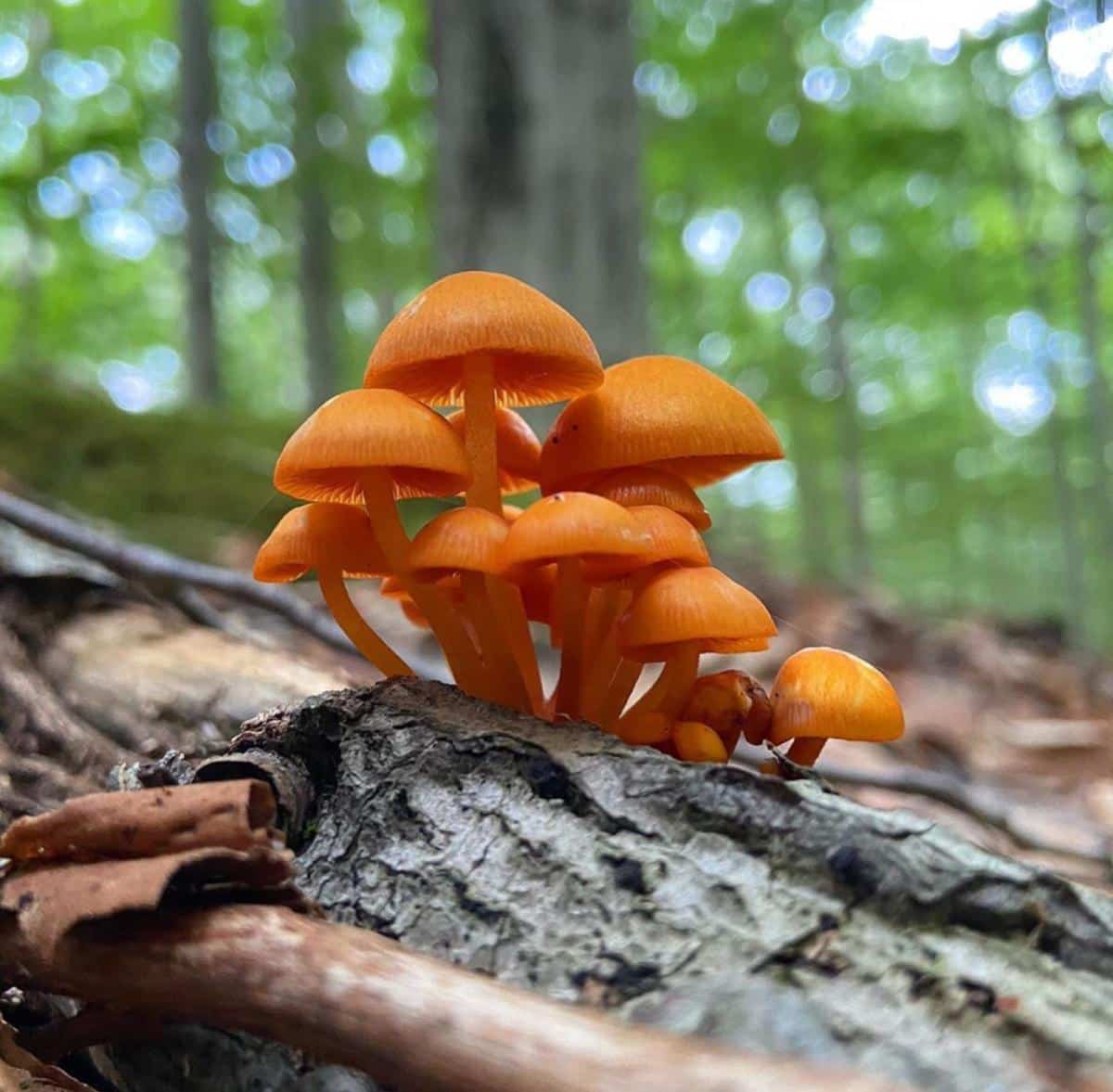
Jump to:
All About The Orange Mycena Mushroom
This mushroom species is common in identification forums because its bright coloring draws people to it. It isn’t an edible species, but it does show some medicinal promise.
The orange mycena was originally named Agaricus leajanus by the renowned English biologist Miles Joseph Berkeley in 1845. Later, Pier Andrea Saccardo reclassified it into the genus Mycena in 1891. The specific epithet “leaiana” is a tribute to Thomas Gibson Lea, a passionate Cincinnati-based naturalist who collected and sent numerous fungal specimens to Berkeley for identification.
Recently, scientists discovered a very cool and unique trait of Mycena fungi (not just this species). It was thought that Mycena species only grow on dead and decomposing wood, but now studies show these fungi are actually in the process of transitioning to living, healthy plants. Whether this is solely a parasitic process or possibly mutualistic is yet to be seen.
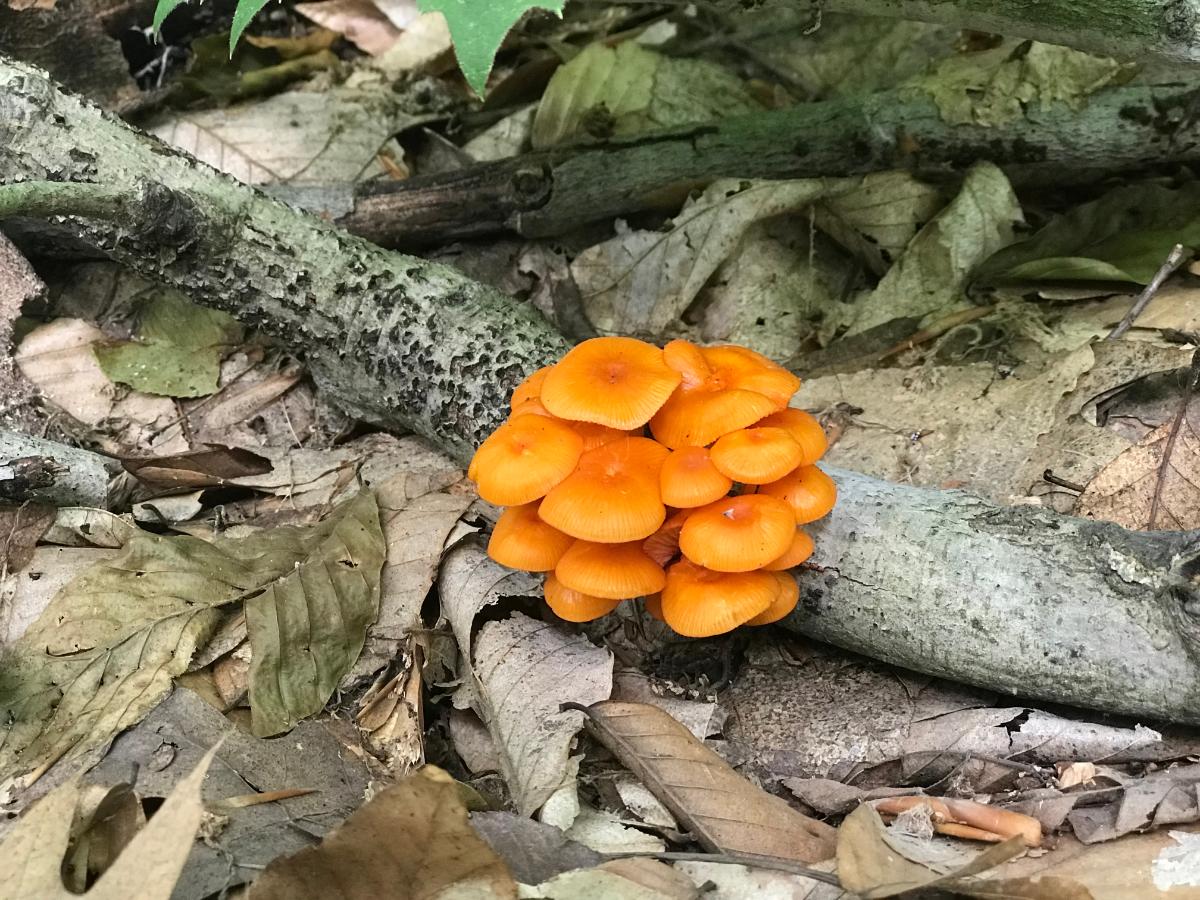
Orange Mycena Identification Guide
Season
The orange mycena is a summer and fall fruiter, typically appearing from June through September.
Habitat
This is a saprobic species, meaning it obtains its nutrients by decomposing dead and decaying wood, primarily from hardwood trees. These mushrooms often grow in dense, clustered formations, with multiple stems emerging from a single point on the substrate.
Orange mycena clusters grow on wood, not from the ground. It isn’t common to see a single fruiting mushroom, but sometimes it happens. More often, it grows in thick, dense, overlapping clusters. And, many times, there are lots of clusters on one decaying log.
It’s not uncommon to find these mushrooms even in very dry weather because they get water from the rotting logs from which they fruit.
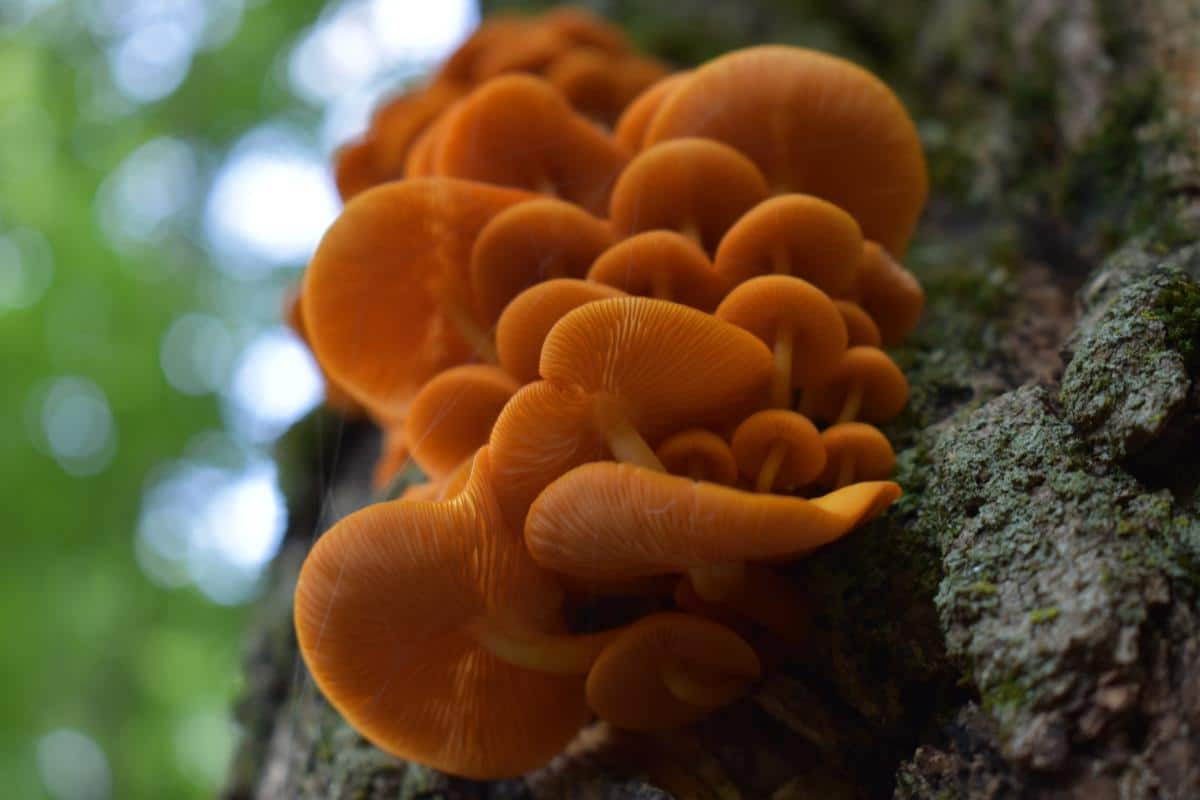
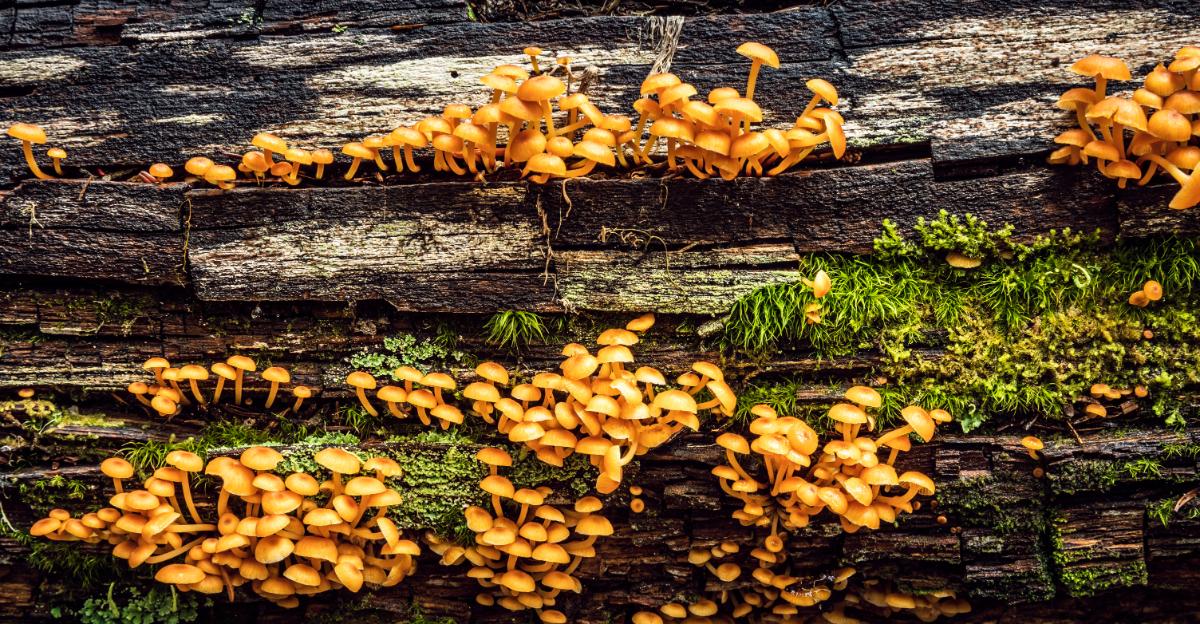
Identification
Cap
The cap of the orange mycena is initially rounded or bell-shaped. As it matures, it becomes more expanded and flattened, sometimes with a slight depression in the center. The cap’s surface is smooth and sticky, especially in moist weather, and can range in color from a bright, vibrant orange to a more muted, yellowish-orange hue as the mushroom ages. Rainy weather will also saturate the cap color and wash it out to a pale orange – nothing like the bright orange of fresh specimens.
The cap doesn’t have any decorations except the edge might be lined, meaning you can see the outline of the gills through the cap flesh. Mature caps range from 3/8 to 1 1/2 inches (1 to 4 cm) in diameter, and the oldest specimens sometimes fade to an almost ghostly white.
Gills
One of the most distinctive features of the orange mycena is its gills – the edges of the gills are a brilliant reddish-orange, while the gill faces are a more subdued salmon or pale orange color. This striking contrast in color is due to the presence of specialized cells called cheilocystidia, which are concentrated along the gill edges.
The striking contrast of gill coloring is known as “marginate” and is a defining characteristic of this mushroom. When bruised, these gills stain an orangish-yellow hue. The gills are crowded and are attached to the stem.
Stem
The stem of the orange mycena is typically 3 to 7 inches long and 1/16 to 1/8 inch thick. It is often curved or wavy, with a smooth texture that becomes sticky when wet. The stem is orange or yellowish-orange in color, with a base covered in dense, coarse hairs.
It is hollow, tough, and cartilaginous—it doesn’t break or snap easily. Sometimes, the stem releases an orangish juice when squeezed between the fingers.
Flesh
The flesh is thick, watery, and white or yellowish-white. When handled, the mushroom’s orange pigment will very likely stain the skin.
Odor and Taste
The orange mycena has a slightly mealy smell and no distinctive taste.
Spore Print
The spore print of the orange mycena is white.

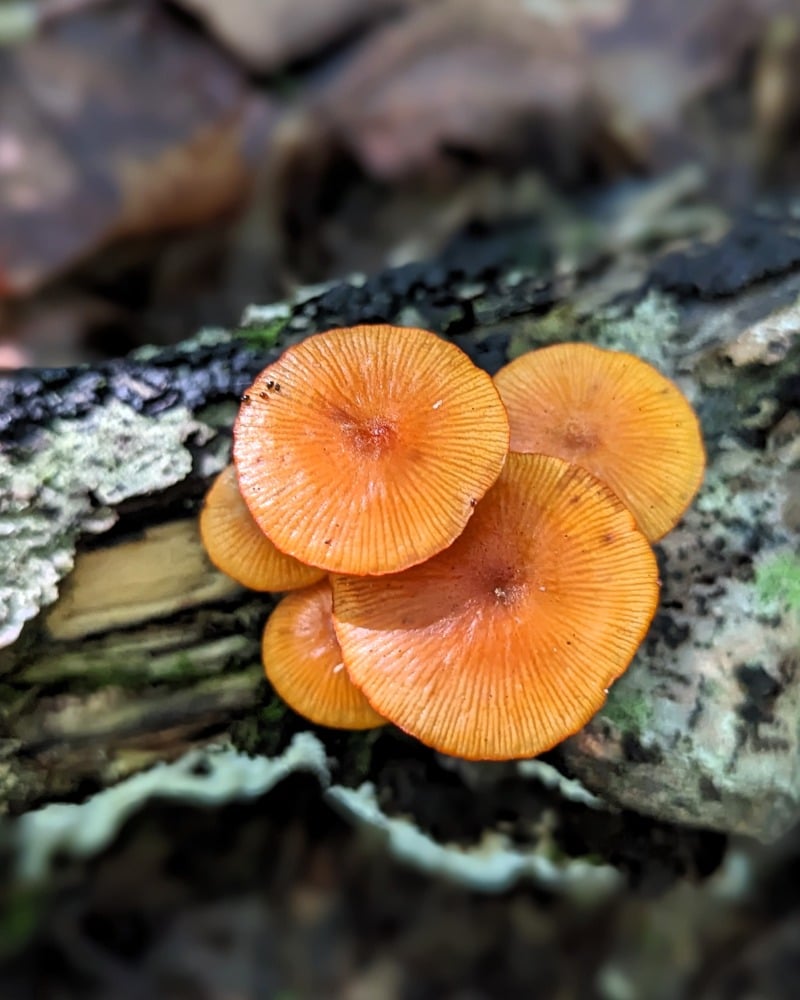
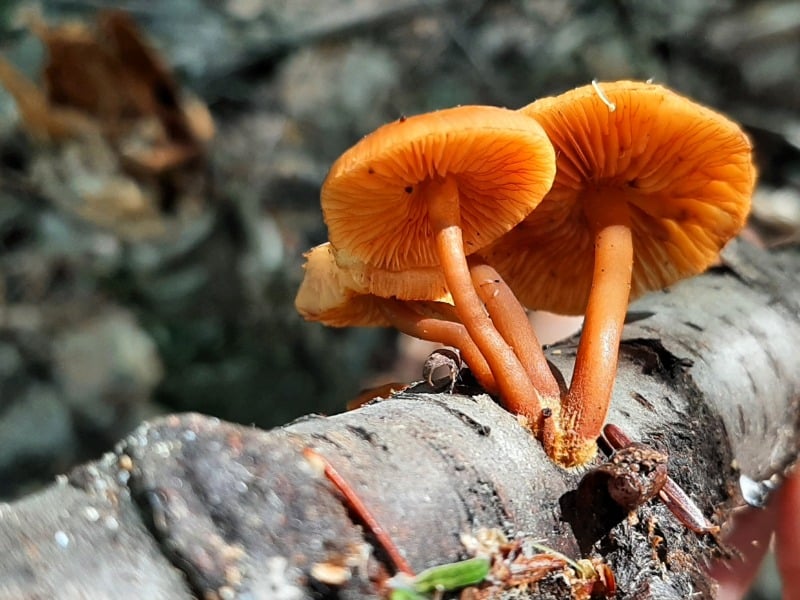
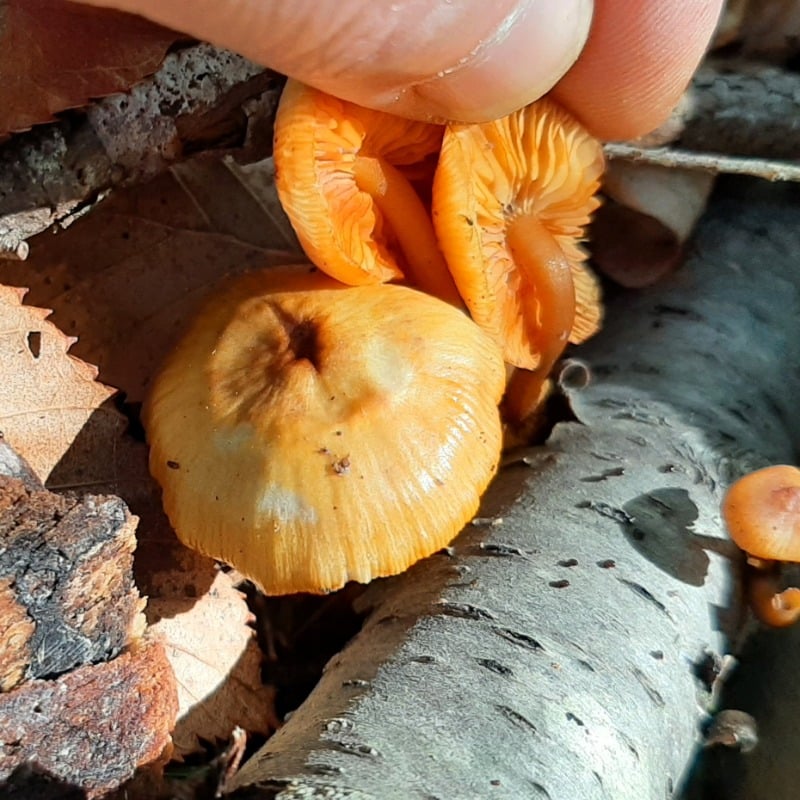

Orange Mycena Lookalike Species
While the orange mycena is a relatively distinctive mushroom, a few similar species can be easily confused with it.
Mycena texensis
Mycena texensis is closely related to the orange mycena but has been described as having “grayish colors of the cap.” Additionally, Mycena texensis has smaller spores. The best way to tell it apart is through distribution and microscopic analysis. This Texas Mycena is not very common and is possibly only found in the Gulf States.
Enoki (Flammulina velutipes)
The winter mushroom, also known as the velvet foot or enokitake (Flammulina velutipes), can be mistaken for the orange mycena due to its orange coloration. However, Flammulina velutipes has a dark, almost black stem base and lacks the distinctive gills of the orange mycena. The gills of enoki are white or pale yellow, not orange.
It is the wild enoki that resembles orange mycena. You may have seen enoki in the supermarket, which is all white with very long stems. As wild as it sounds, that all-white enoki is an adaptation of the very orange wild enoki species.
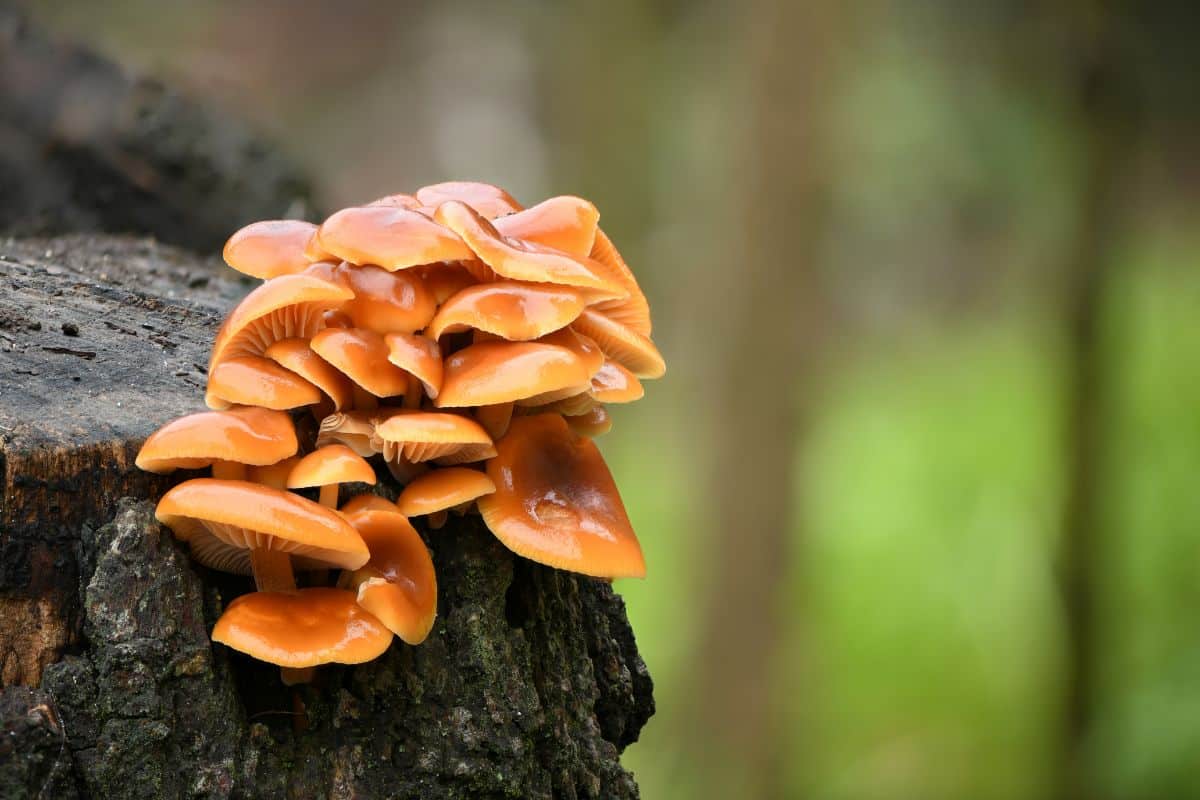
Deadly Galernia
The deadly galerina is orangish and grows in clumps on decaying wood, just like the orange mycena. However, there are some key differences. Deadly galerinas are usually more brown than orange, with a darker center. They also have yellowish gills, not bright orange ones.
If in doubt, do a spore print. The spore print of the deadly galerina is rusty brown, while the spore print of the orange mycena is white. This is why spore prints are so essential.
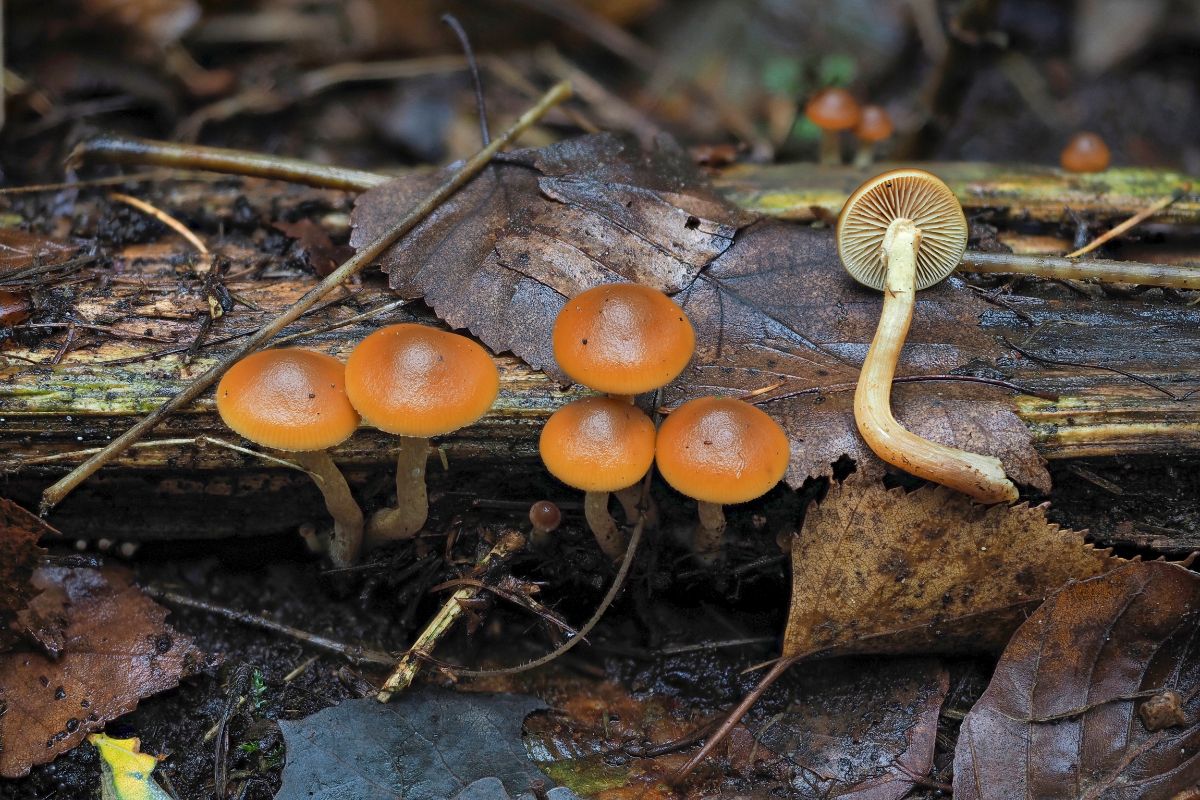
Other Mycena Species
Several other Mycena species, such as Mycena luteopallens, Mycena acicula, Mycena adonis, and Mycena rutilaniformis, can share some similarities with the orange mycena in terms of size and coloration. However, close examination of the cap, gills, and microscopic features can help differentiate these species.
- Mycena luteoplannens fruits from walnuts, hickory nuts, and butternuts and is much smaller and paler.
- Mycena acicula and Mycena adonis are tall, dainty looking species with bright caps. They have super long, thin stems and small red or orange bell-shaped caps
- Mycena rutilantiformis is not as brightly colored
- Mycena strobilinoides is strikingly bright red, not orange
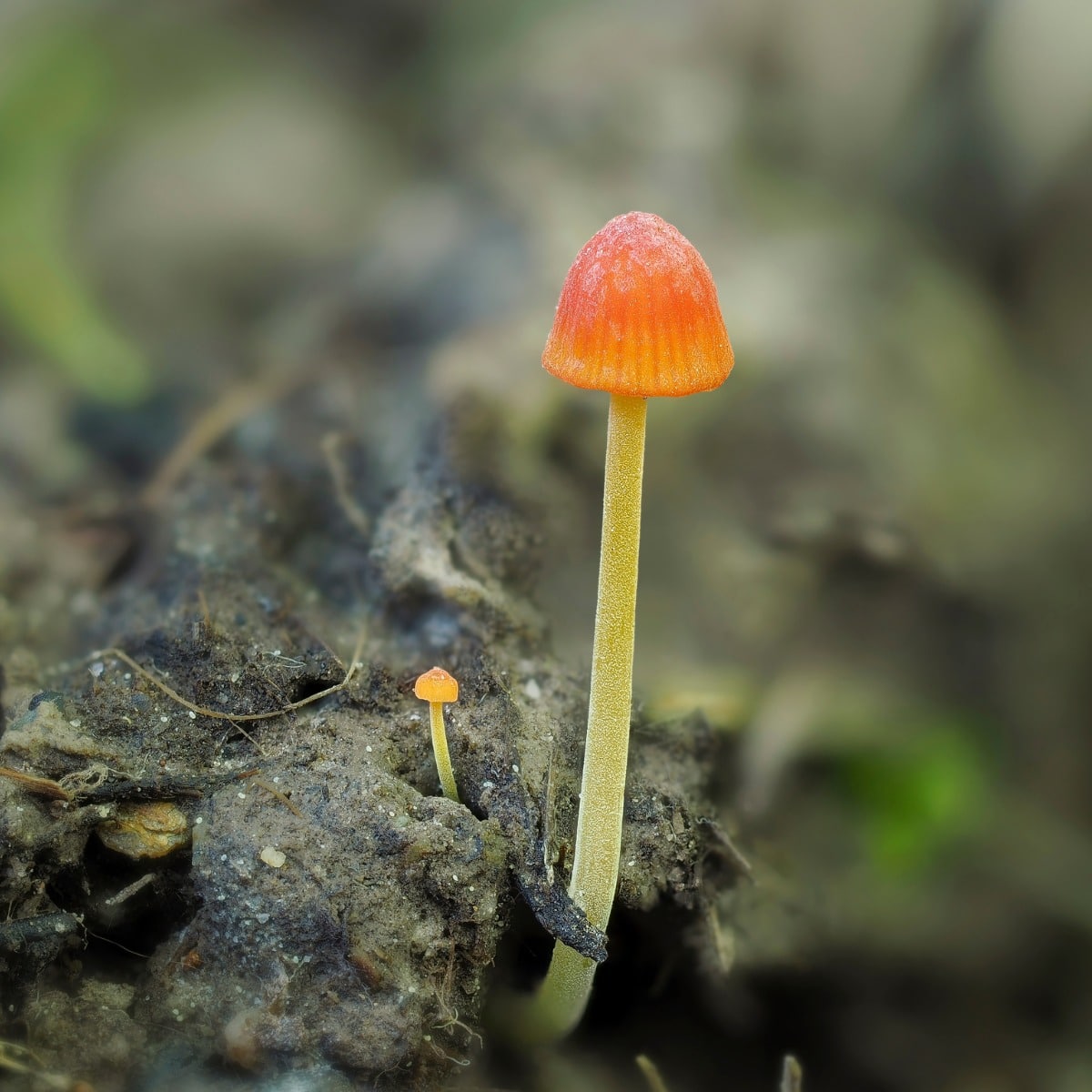
Medicinal and Culinary Potential of the Orange Mycena
This fungus has garnered interest for its potential medicinal properties. Studies have revealed that the orange pigment responsible for the mushroom’s vibrant hues, known as leainafulvene, possesses weak antibacterial activity and pronounced cytotoxic (cell-killing) effects on tumor cells. Additionally, leainafulvene has been shown to have mutagenic (DNA-altering) activity, as measured by the Ames test.
Despite its intriguing medicinal potential, the orange mycena is not recommended for culinary use. The mushroom’s small size, rubbery texture, and the fact that the orange pigment can stain the skin when handled make it an unappealing choice for the dinner table.
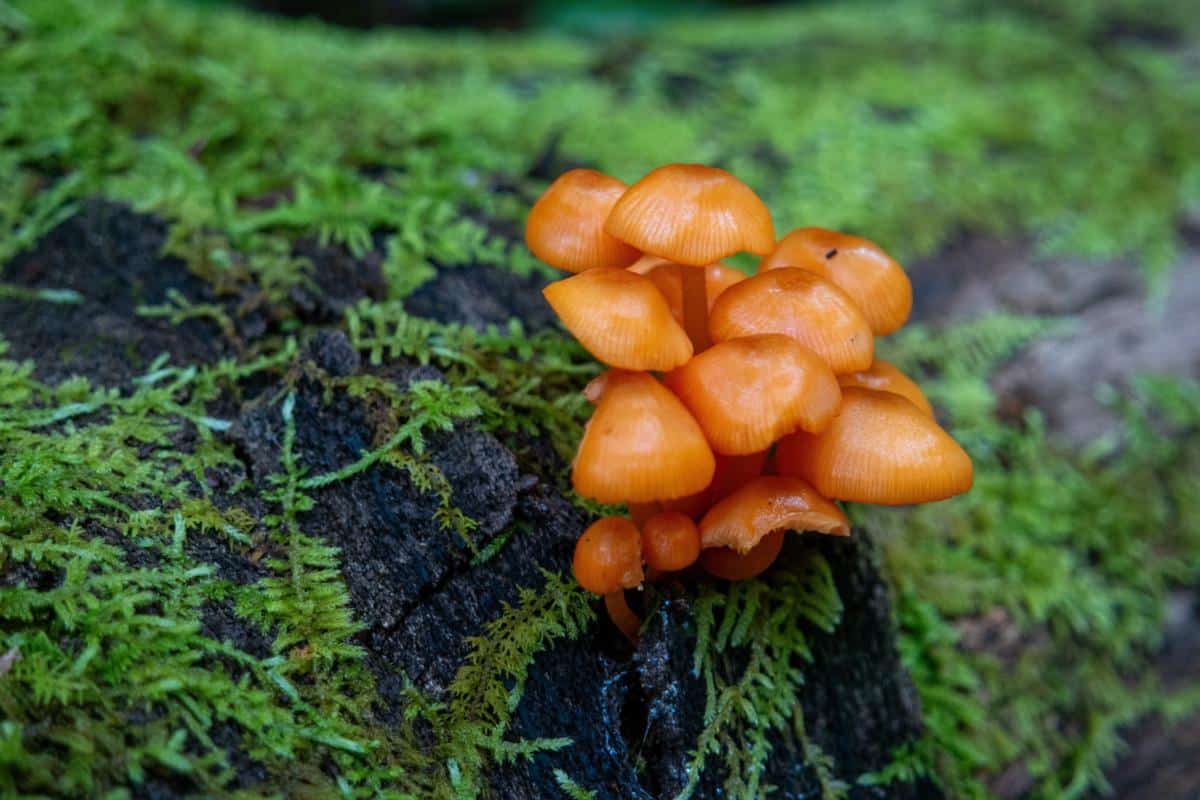
Common Questions About Orange Mycena Mushrooms
Is orange mycena edible?
This species isn’t edible but it also isn’t poisonous. It isn’t very substantial and it doesn’t have a strong taste, so there isn’t much desire to forage it even if it is edible.
Is Mycena leaiana poisonous?
No, the orange mycena is not poisonous. It also isn’t considered edible because it’s so small with insubstantial flesh and no flavor.

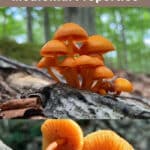
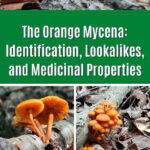
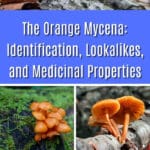
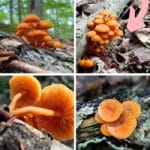




Will Halbrooks says
Nice article! I found it useful in drafting a presentation on this species for a mushroom class I’m taking, as I found a good example of an orange mycena cluster while foraging.